The SARS-COV-2 virus is incredibly small, but the reverberations of its impact on humanity dominated the events of 2020 and will linger for years.
There was never any question that the novel coronavirus pandemic is The Columbian’s — and the world’s — top story of 2020.
Clark County’s first case of COVID-19, the disease caused by the virus, was reported on March 7. Since then, it has sickened more than 12,000 people and taken the lives of more than 135 people.
It has shuttered businesses, reinvented learning and upended nearly every aspect of Clark County life.
COVID-19 is not just the top story of the year; it is the driver behind five other stories selected by Columbian staffers earlier this month for our Top 10 list. It also plays a role in our other top stories, which include a surge in local activism, hazardous air caused by huge Western wildfires and repair of a 103-year-old piece of the Interstate 5 Bridge.
Here are our top 10 stories of 2020.
—Mark Bowder, metro editor
Enlarge
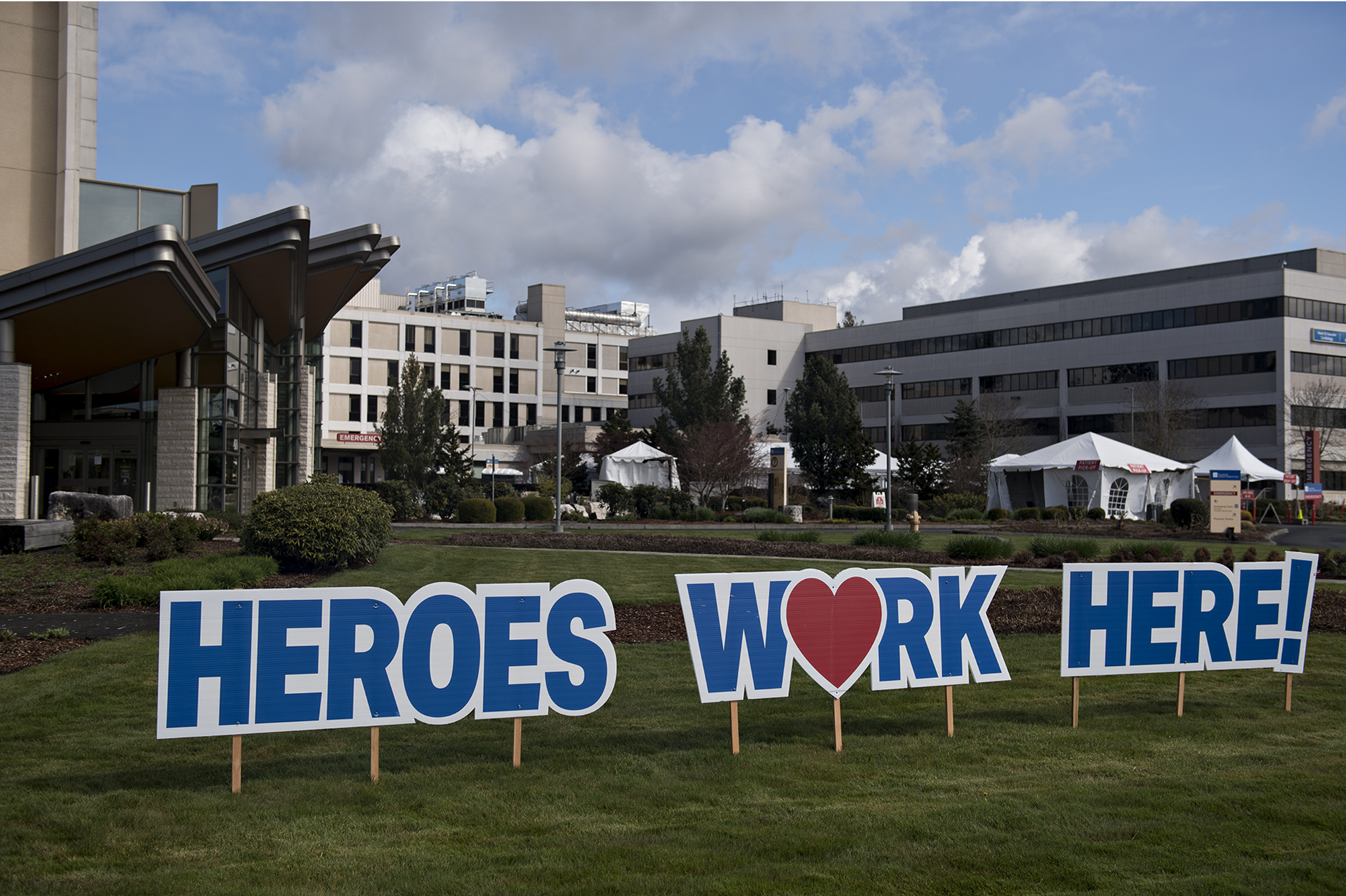
Amanda Cowan of The Columbian
1. COVID pandemic
It’s rare when the world’s most important story of the year happens in Clark County.
Given the COVID-19 pandemic’s ubiquity, the unique thing about this year is that top story of the year happened everywhere in 2020.
When murmurs of a new virus in China began to surface, it seemed farfetched that COVID-19 would upend life in Clark County.
Then a coronavirus case appeared in Snohomish County on Jan. 20, the first known American case at the time.
A couple of weeks later, late at night on March 6, Clark County registered its first case — a man in his 70s.
Physical distancing and face-covering guidelines came next, and are still in place locally.
In the time since March 6, Clark County councilors have pushed back against public health advice, nurses have moved out of their homes to protect family and back into those homes and some folks have continued to struggle with coronavirus symptoms long after the virus receded from their body.
This month, light at the end of the tunnel appeared, when Michelle Finucane injected nurse Schaeffer Seabrook with a COVID-19 vaccine at PeaceHealth Southwest Medical Center in Vancouver.
It will still take months before the county reaches herd immunity, but the known toll for Clark County in 2020 will be more than 12,000 infections, hundreds of hospitalizations and more than 135 deaths.
—Wyatt Stayner
Enlarge
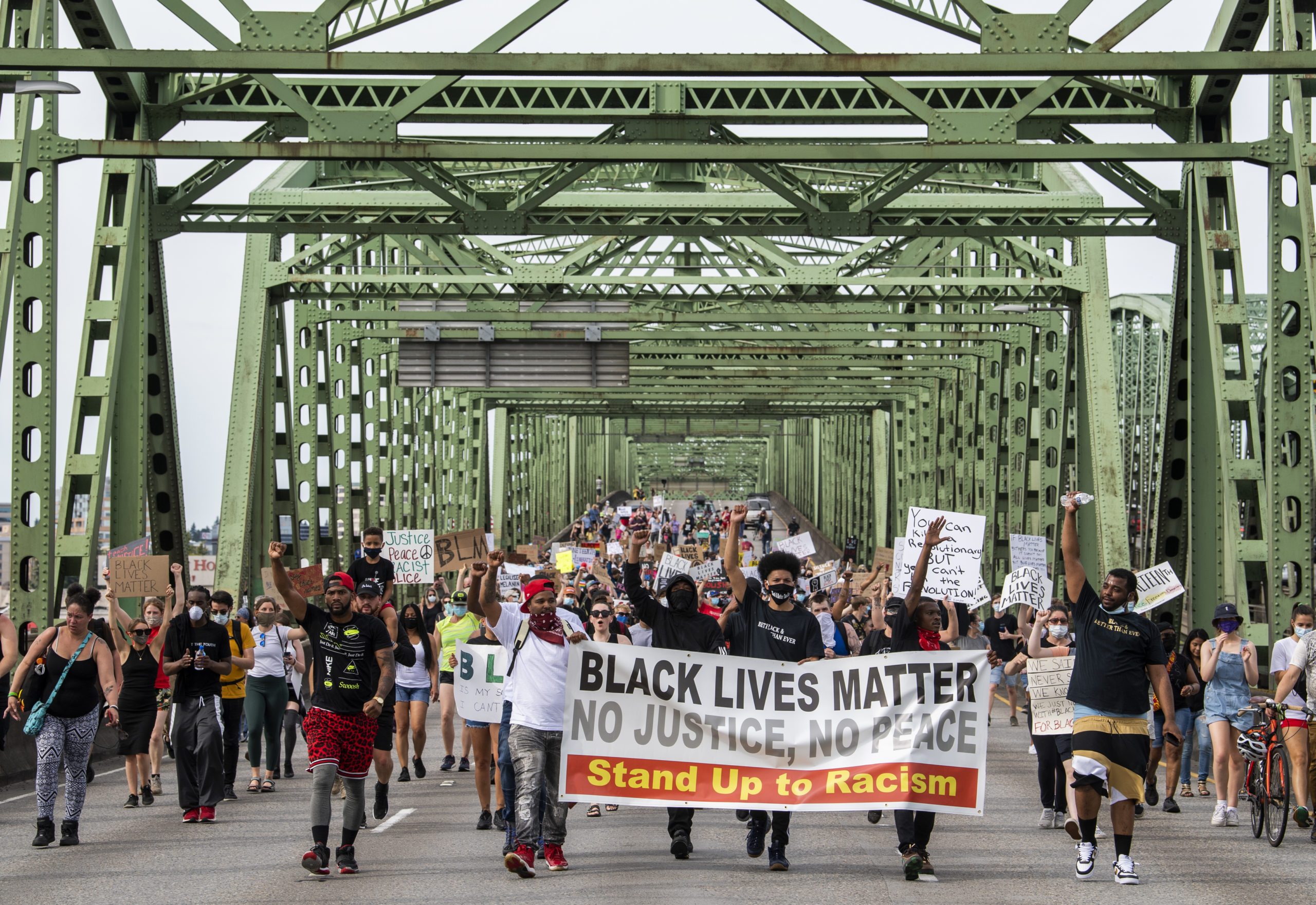
Alisha Jucevic of The Columbian
2. Wave of activism reaches Clark County
Across the nation, activists took to the streets this year to call for racial justice, protest police violence, rally against COVID-19 regulations and express discontent with election results. Clark County saw a surge of demonstrations — throughout the year, protesters drew counter-protesters, setting off a cycle of activism that ping-ponged across the political spectrum.
When the pandemic lockdowns began, largely maskless groups gathered to pressure the governor into lifting restrictions over their livelihoods. In July, a group gathered in front of the Vancouver city attorney’s home to protest charges against a business owner who opened during the lockdown; in September, around 4,000 gathered at Vancouver Waterfront Park for a worship-protest hybrid event to defy restrictions around in-person religious gatherings.
Anti-racism protests grew widespread after the death of George Floyd in Minneapolis on Memorial Day, with groups gathering in Vancouver and Ridgefield to call for police reform. Activism continued through the rest of the year with marches, car rallies and memorials. The death of Kevin Peterson Jr., a 21-year-old Black man fatally shot by Clark County deputies in October, revived the surge of local activism with demonstrations continuing through the rest of 2020. In several instances this year, protests against police violence were met by counter-protesters in the “Back the Blue” movement who rallied in support of law enforcement. The opposing groups clashed during a tense standoff in downtown Vancouver last month.
— Calley Hair
Enlarge
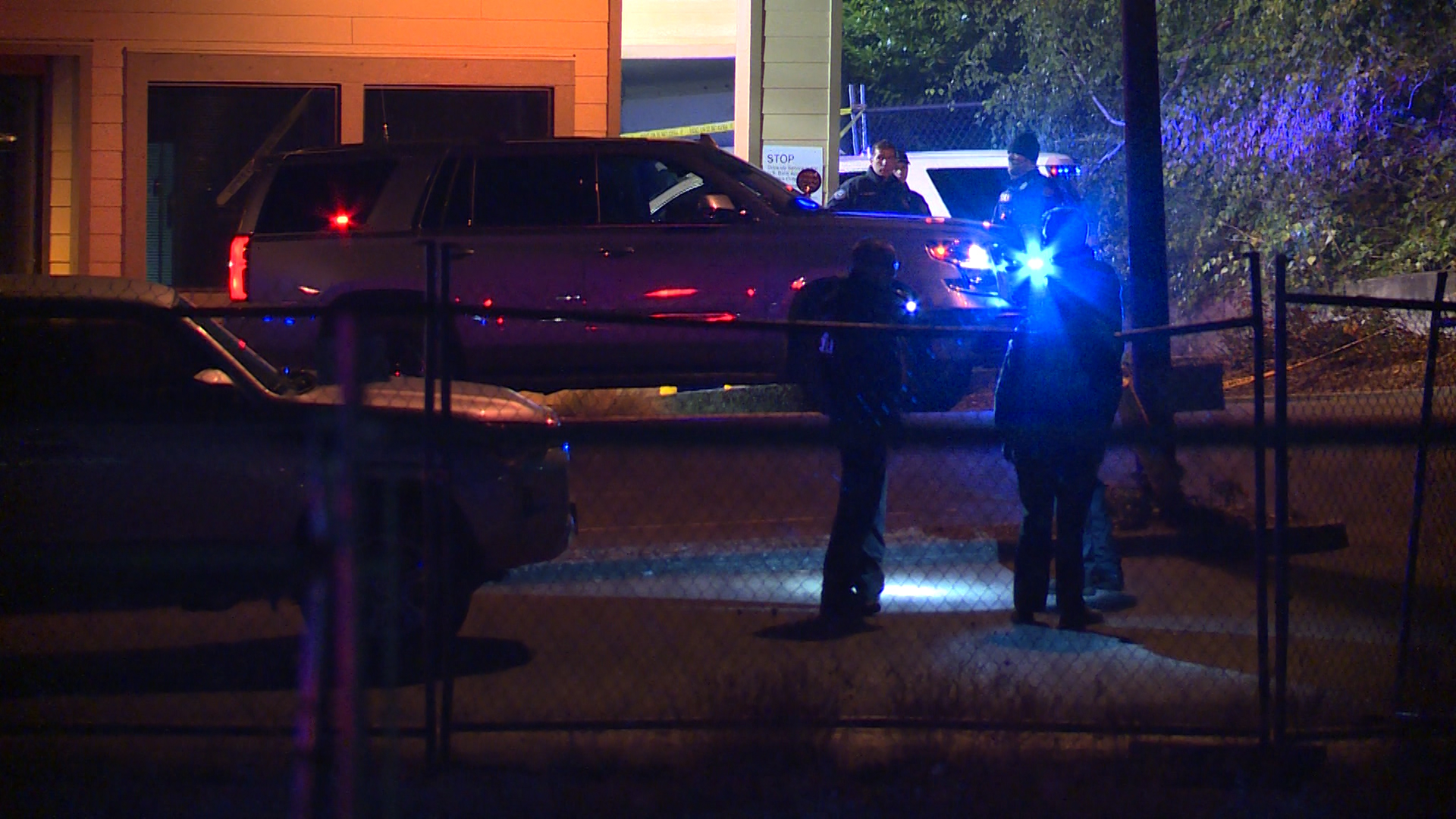
Provided photo
3. Shooting deaths raise questions
about use of force
The Oct. 29 fatal shooting of Kevin Peterson Jr., 21, by three Clark County sheriff’s deputies again fueled community debate over police use of deadly force, particularly on people of color and those with mental illness.
Investigators tasked with looking into Peterson’s death have sent their findings to the Clark County Prosecuting Attorney’s Office, but an outside prosecutor’s office will decide whether the deputies’ actions were legally justified. Meanwhile, lawyers representing Peterson’s family are conducting their own investigation and focusing on future civil litigation.
Even before Peterson’s death, conversations about police use of force were reignited, locally, when Vancouver police shot and killed William Abbe, a homeless man. Abbe was killed April 28 when police responded to an assault between him and another man in central Vancouver. Following his death, a coalition of groups demanded oversight into the investigation.
Following the community outcry, Vancouver Mayor Anne McEnerny-Ogle pushed to include the topic of police body-worn cameras as a priority in the 2021 legislative session. Both the Clark County sheriff and Vancouver police chief have said they’d support the implementation of police body-worn cameras. The issue is the cost.
— Jerzy Shedlock and Jessica Prokop
Enlarge
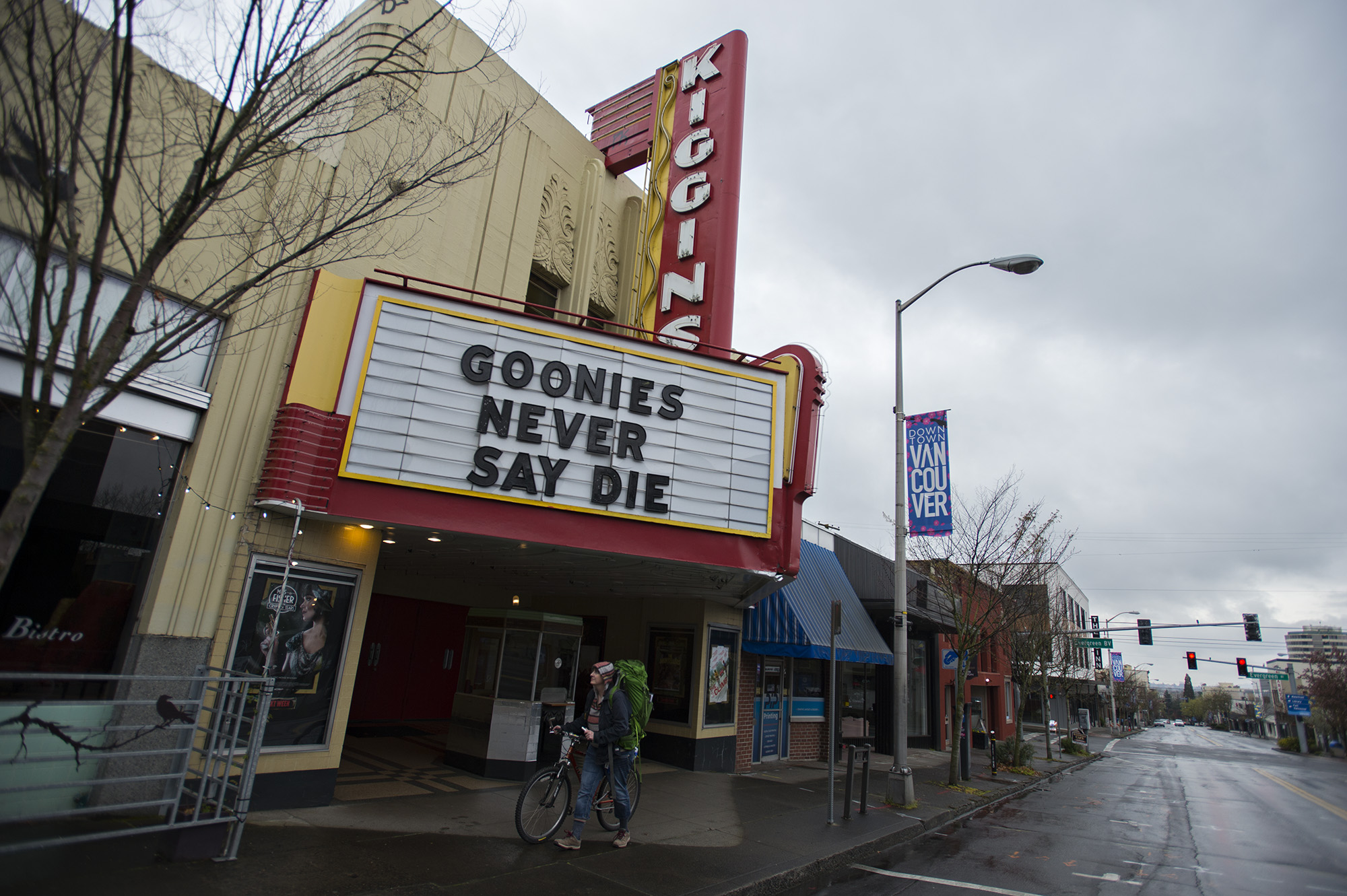
Amanda Cowan of The Columbian
4. COVID-19 remakes the workplace
In March, the highly contagious virus that causes COVID-19 mean only “essential workers” were allowed to work. The rest moved home for the long haul while businesses figured out how to work remotely. The governor sent a wave of restrictions over businesses, and among the most bizarre reactions were a shortage of toilet paper from grocery stores.
All industries declined during the pandemic, except for financial services, in 2020.
The hardest hit were restaurants and hotels, part of the hospitality industry. Revenue loss, furloughs, layoffs and business closures plagued most businesses, except for grocery stores and a few online-based companies.
A round of federal loans given around June helped businesses while they adapted to a pandemic economy; additional help came from state and local grants, and also moratoriums on rent. But a second round of PPP loans was the most desired form of help — a safety line that remained in purgatory during the presidential election and Congress stalling over the second half of the year.
— Will Campbell
Enlarge
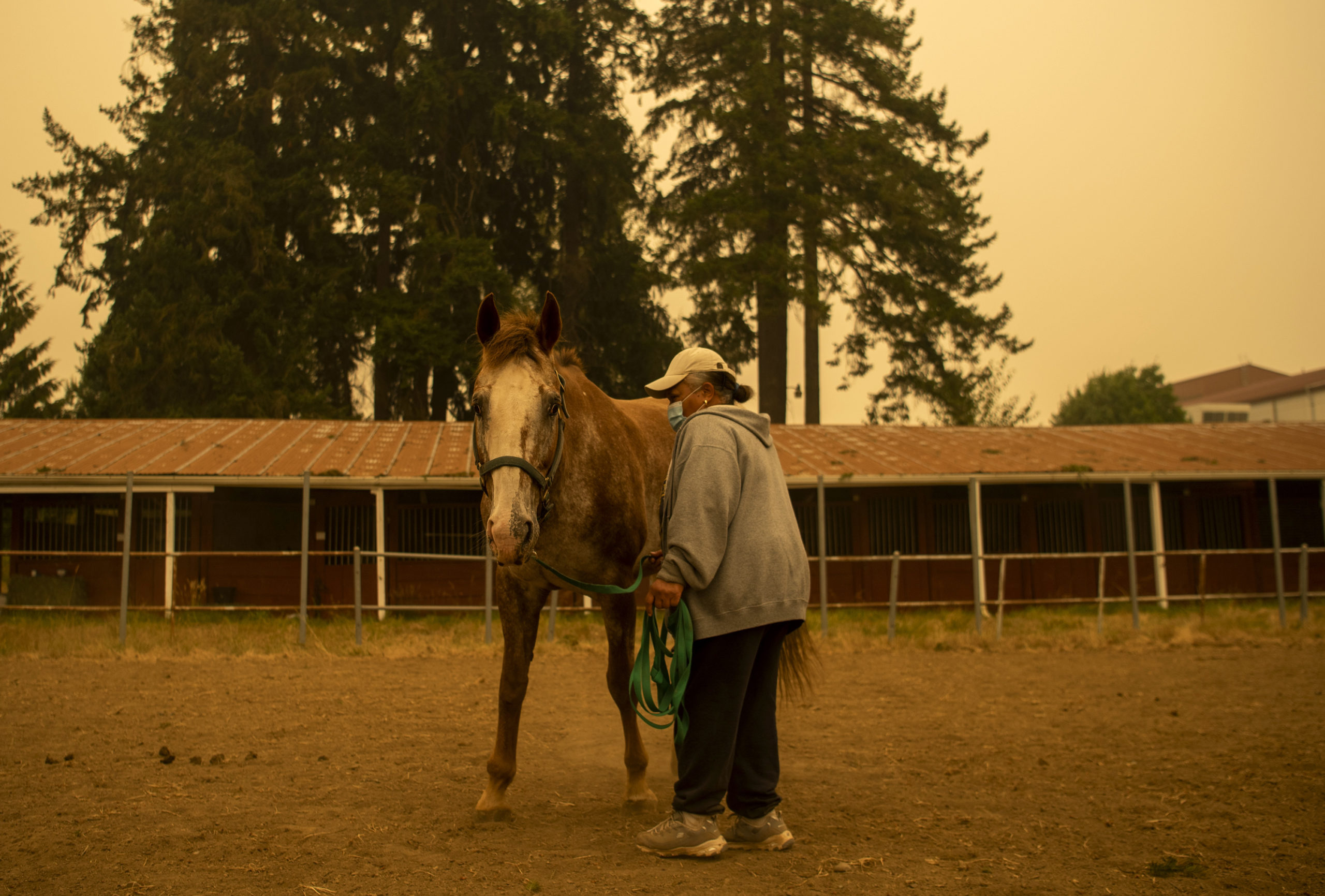
Alisha Jucevic of The Columbian
5. Wildfires turn air hazardous
Several major fires in late summer forced hundreds of thousands of evacuations in both Oregon and Washington, sending evacuees and their animals to Clark County. Poor air quality from the wildfires lingered for several days, at times deteriorating beyond the Environmental Protection Agency’s air quality index.
A group of horse owners from Estacada, Ore., arrived at the fairgrounds, after hearing of it as a possible destination for evacuated horses, around 1 a.m. Sept. 9. But the gates were locked, prompting a series of calls and access to the stables a few hours later.
Three days later, the fairgrounds was at capacity with about 160 horses. Five days later, the Clark County Executive Horse Council estimated that 700 horses had relocated from Oregon to stables around the county, about 75 from within Washington.
On Sept. 15, the Clark County Council unanimously declared a state of emergency. The declaration gave county staff permission to make quick decisions about smoke and wildfire threats and opened funding channels.
— Jack Heffernan
Enlarge
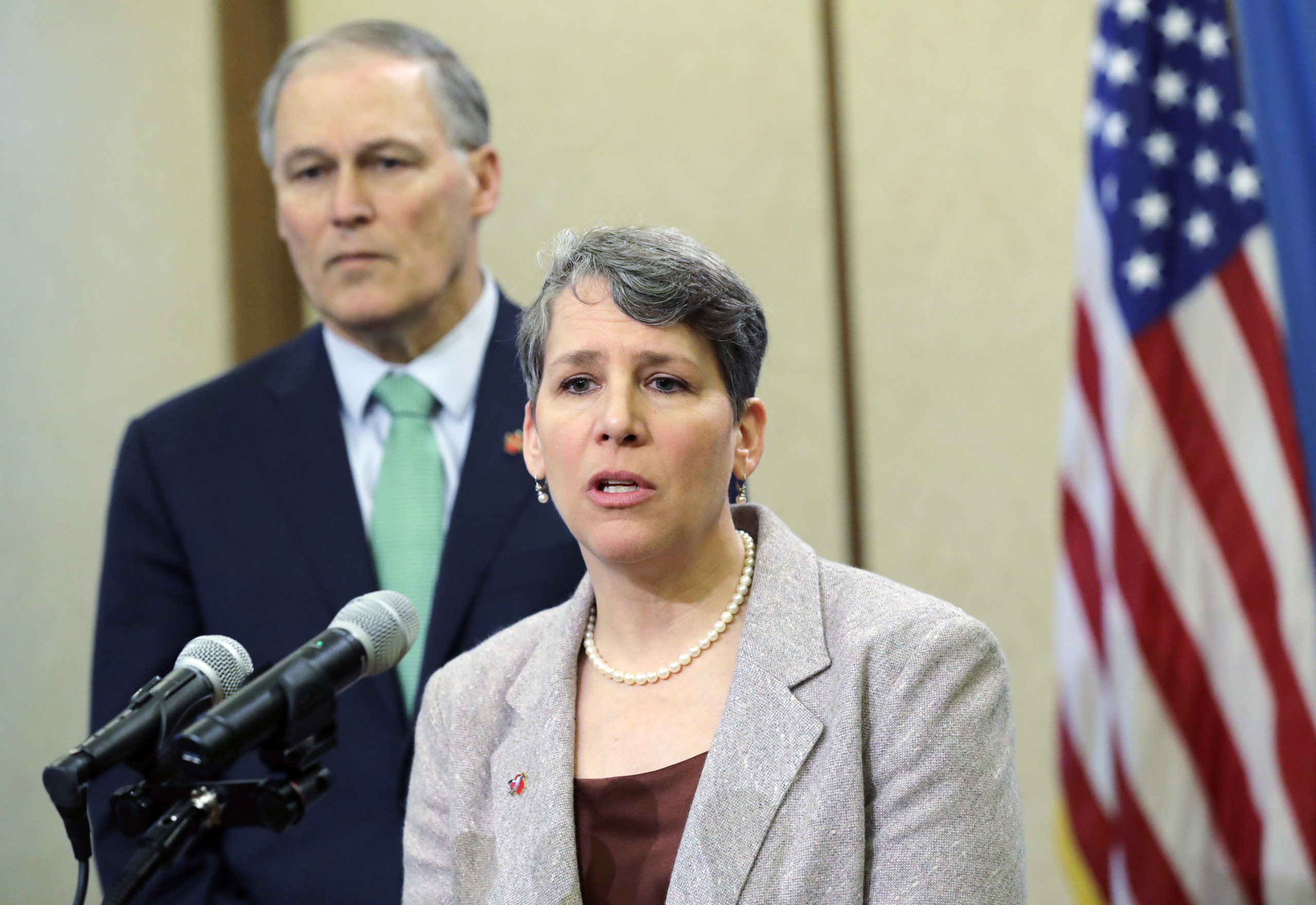
Associated Press files
6. Unemployment explosion
Clark County was slammed with job losses in mid-March that got worse until May, when 33,718 people collected unemployment benefits. In comparison, about 8,800 people collected benefits during the worst month of the Great Recession.
Since May, the job market has had steady but slowing improvement, except for November, when a second round of restaurant restrictions caused a bump in jobless claims. Unemployed Americans received an additional $600 from the federal government between April and July, which fell to $300 for three weeks in September.
Since March, tens of thousands of Washingtonians struggled to register for unemployment insurance because of a flood of claims to the state. Many who qualified went months without knowing if they’d receive unemployment insurance, all while their personal savings ran dry and they cut back on their lifestyles.
The state was also the victim of an overseas fraudulent identity attack that stole about $650 million meant for unemployment insurance. The state has recovered about $357 million of the stolen money.
— Will Campbell
Enlarge
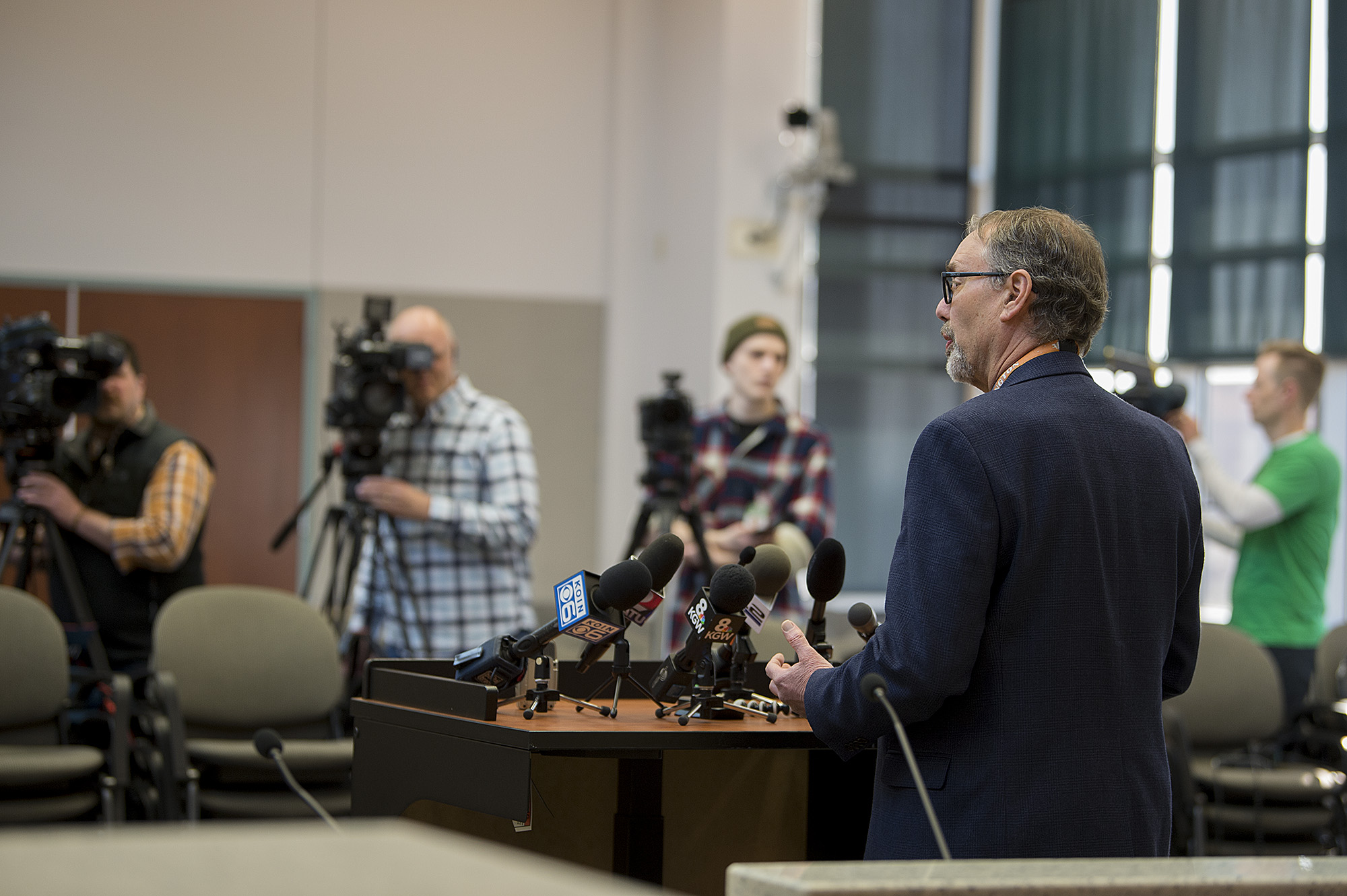
Amanda Cowan of The Columbian
7. Pandemic puts focus on Public Health
In 2019, Clark County Public Health was saddled with the second-largest measles outbreak in the U.S. for that year. In total, the county clocked 71 measles cases and spent nearly $900,000 fighting the outbreak.
One might think Public Health would deserve a break in 2020, but any hopes of that quickly dissipated after COVID-19 manifested in early March in Clark County.
Since that time, Public Health has at least temporarily beefed up its workforce, hiring more contact notifiers and case investigators among other positions to contain the local coronavirus spread.
Face-covering and physical distancing guidelines have been enacted at the state level, and Clark County has seen a of COVID-19 infections, which have peaked in the early spring and early fall.
The worst might be yet to come, as Christmas, New Year’s and indoor winter gatherings could spark another coronavirus surge.
But there’s also optimism as local providers have begun to administer the first doses of a coronavirus vaccine.
“This is what hope looks like,” Legacy Health’s Dr. Dominic Chan said. “This how we’re going to get back to dancing in the streets without our mask on.”
— Wyatt Stayner
Enlarge
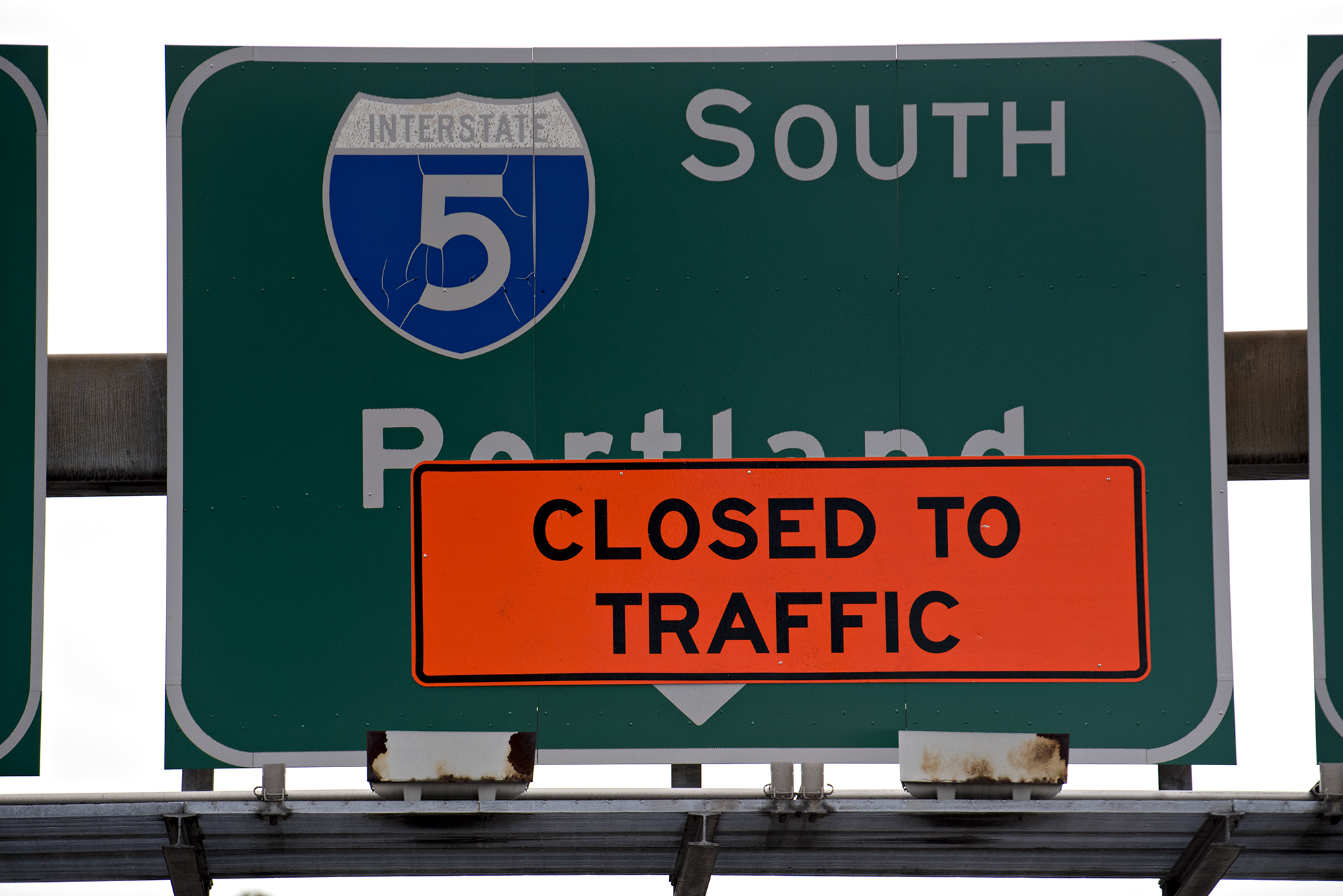
Amanda Cowan of The Columbian
8. Trunnions and tribulations
The Interstate 5 Bridge trunnion replacement project required a nine-day, round-the-clock closure of the northbound span of the twin I-5 bridges while crews swapped out a cracked axle at the top of the bridge’s south tower, along with other worn-out components of the 103-year-old lift system.
Both sides of the freeway had to share the three-lane southbound span in the interim, creating a choke point which had the potential to snarl traffic throughout the Portland metro region. The Washington and Oregon Departments of Transportation spent months leading up to the September project start date warning commuters to stay home or avoid driving at rush hour.
Fortunately, local drivers got the message. The project was delayed by one week to make sure the freeway remained at full capacity in case of wildfire evacuations, but when the closure finally did get underway, it was a week of occasional backups but nothing apocalyptic.
Bridge crossing data from ODOT later showed that traffic dropped by more than a third during the closure.
— Anthony Macuk
Enlarge
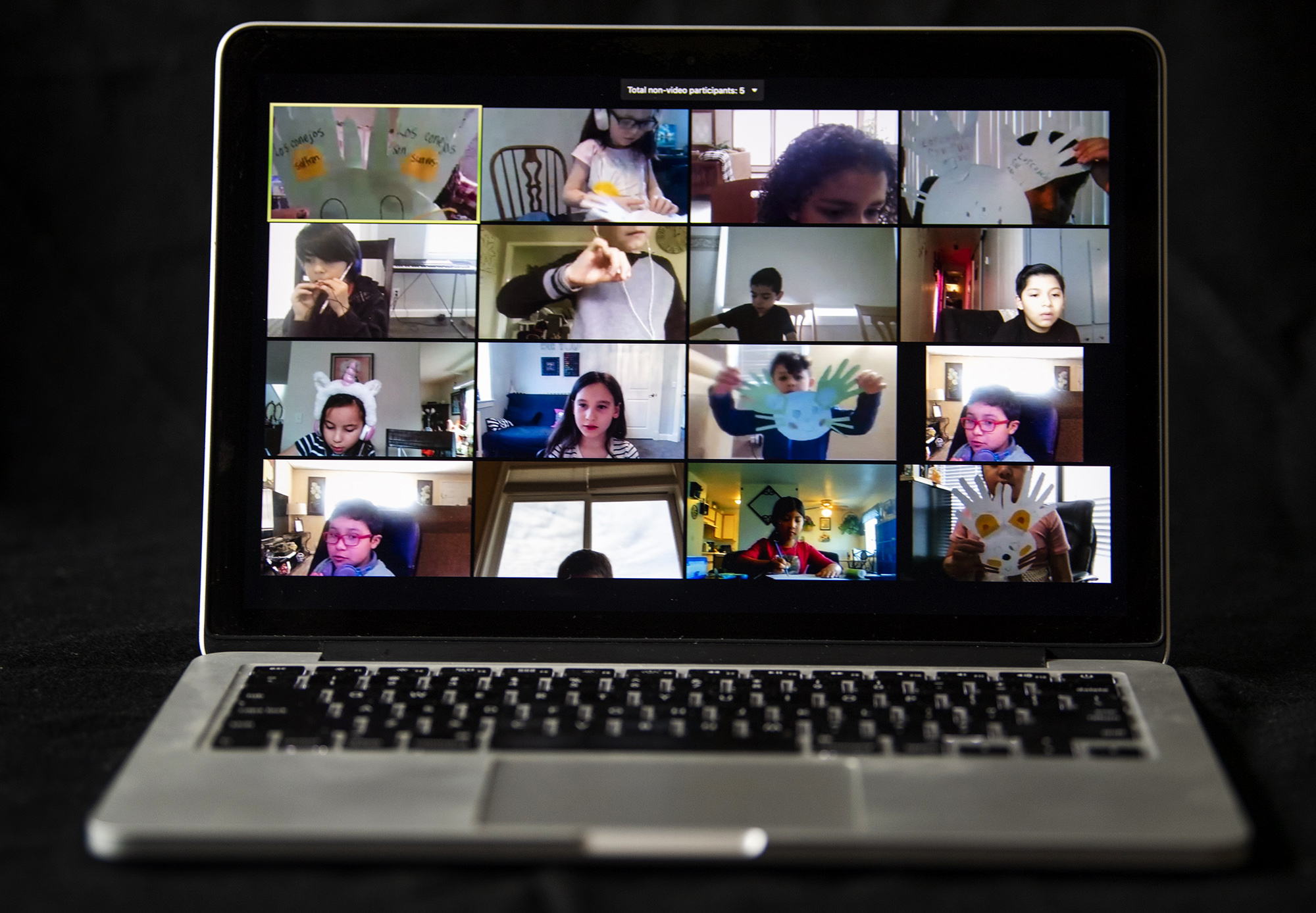
Alisha Jucevic of The Columbian
9. COVID-19 changes learning
This has been a year unlike any other in education. School districts across Clark County ended 2020 the same way they closed out the 2019-20 school year in June — immersed in remote learning.
Gov. Jay Inslee first announced school closures for six weeks back on March 13 in an attempt to curb the COVID-19’s spread. That led to mandatory at-home learning for the remainder of the school year, and eventually, canceled sports seasons, proms and traditional graduation ceremonies.
Over the past nine months, the pandemic has forced K-12 schools to dramatically shift how they deliver education to students. Teaching and learning through a screen has tested educators, students and families academically, socially and emotionally.
As of last week, only 15 percent of Washington’s 1.2 million school-age children are receiving in-person learning services.
While most students haven’t returned to buildings, more will to start 2021. Inslee announced last week revised guidelines for reopening schools for in-person learning, and Clark County could see several thousand more students in buildings for hybrid learning by January.
— Meg Wochnick
Enlarge
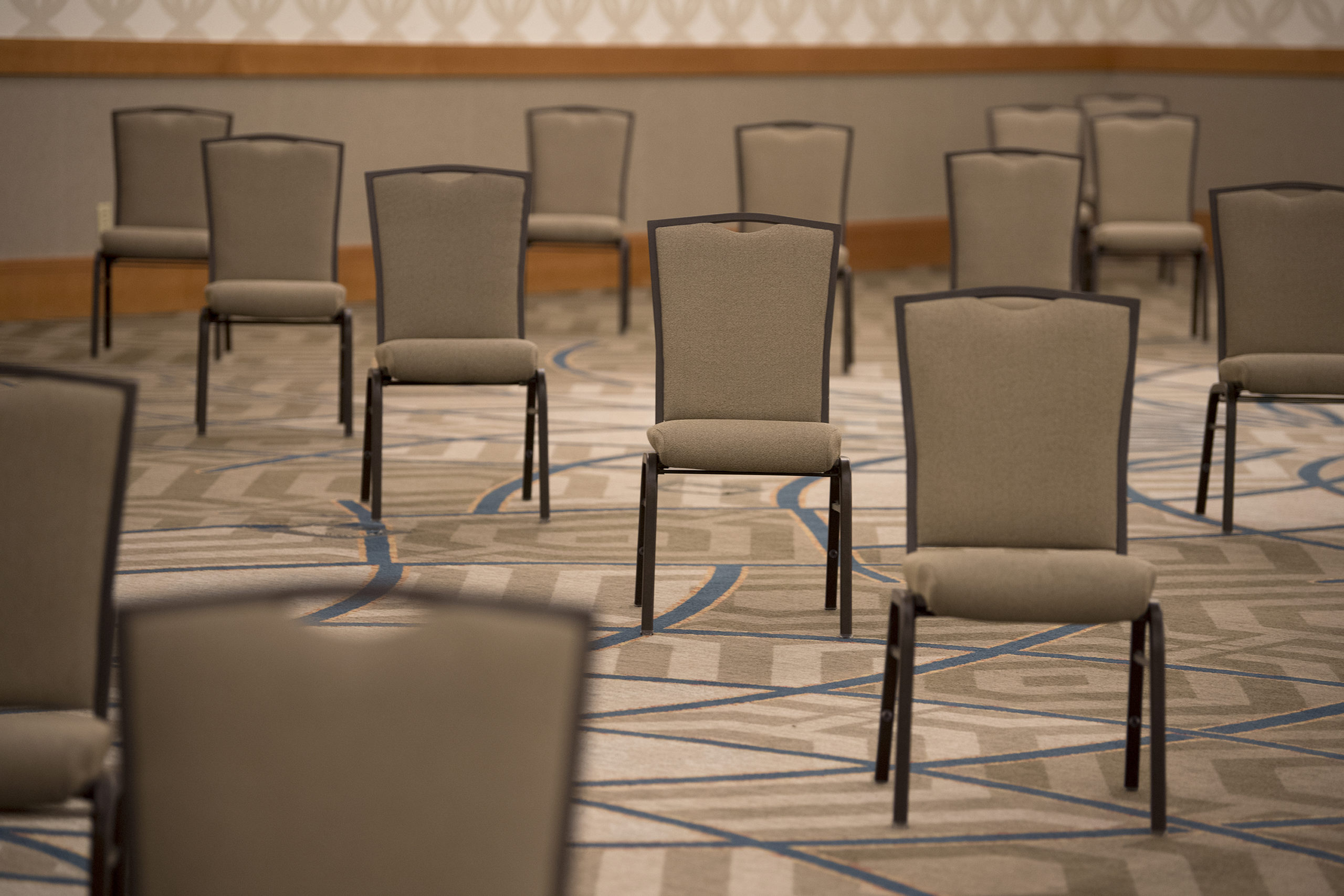
Amanda Cowan of The Columbian
10. COVID-19 cancels everything
No Fourth of July fireworks. No Clark County Fair. No festivals in Esther Short Park, no First Friday Art Walk, no Cruise the Couve. No cinema, stage plays, concerts, dances, bar bands, ballgames.
Just: no.
For many people, the worst aspect of pandemic life has been its complete disruption of the traditional gatherings that make us who we are.
“It’s too easy to say it’s in our genes, but I guess it must be,” said Clark County Fair executive director John Morrison — while scrambling to undo plans for the 2020 fair and start thinking about 2021. “As hectic as our lives get, as technologically advanced as things get, we need to enjoy the basic things — like families coming together to have a good time.”
Losing community festivals and ticketed events is bad enough, but public health authorities even cautioned people against trick-or-treating and holiday gatherings. Not everyone observed the precautions, but those who did felt the sacrifice. Staying home and alone isn’t just no fun, we all learned this year — it can be unhealthy for body and mind.
“Being by yourself for such a long period of time is really hard on people,” said George Keepers, the chair of psychiatry at Oregon Health & Science University in Portland. “We are a social species and we need contact with each other. We evolved as tribes of people living together, not as hermits in caves. But that’s what we’re doing now.”
— Scott Hewitt
Top stories of 2020
Top stories of 2020 on columbian.com based on pageviews
1. Kevin E. Peterson Jr., 21, dies after being shot by sheriff’s deputies in Hazel Dell
2. Joe’s Crab Shack closes permanently
3. Wildfire smoke fills skies ahead of potentially ‘historic’ wind event
4. Nearly 40 employees at Vancouver food processor test positive for COVID-19
5. One person dead in shooting on Fourth Plain in Vancouver
6. Vancouver issues two emergency orders
7. Clark County approved for immediate Phase 2 reopening
8. Coronavirus claims 34-year-old Vancouver man
9. Three people killed in Brush Prairie crash
10. Clark County Public Health testing seven people for coronavirus
Readers picks for the Top 10 stories of 2020
1. (tie) COVID-19 — Thousands sickened, more than 100 killed.
1. (tie) Shooting deaths of Kevin Peterson Jr. and others highlight the debate over use of force, bodycams and policing.
3. Wildfires (horse evacuations, Clark County state of emergency declaration, hazardous air).
4. COVID-19 — Impact on learning.
5. COVID-19 — Business impacts including restaurants, small business, PPP loans).
6. (tie) COVID-19 — The impacts to marginalized populations (homeless, single parents, seniors).
6. (tie) Quiring comments, Confederate memorial spark reckoning on racism in Clark County.
8. Activism surges: BLM protests, patriot Prayer events, anti-masking, Magenta Theater ouster.
9. COVID-19 — Everything’s canceled including school sports and big local events.
10. I-5 Bridge trunnion replaced.